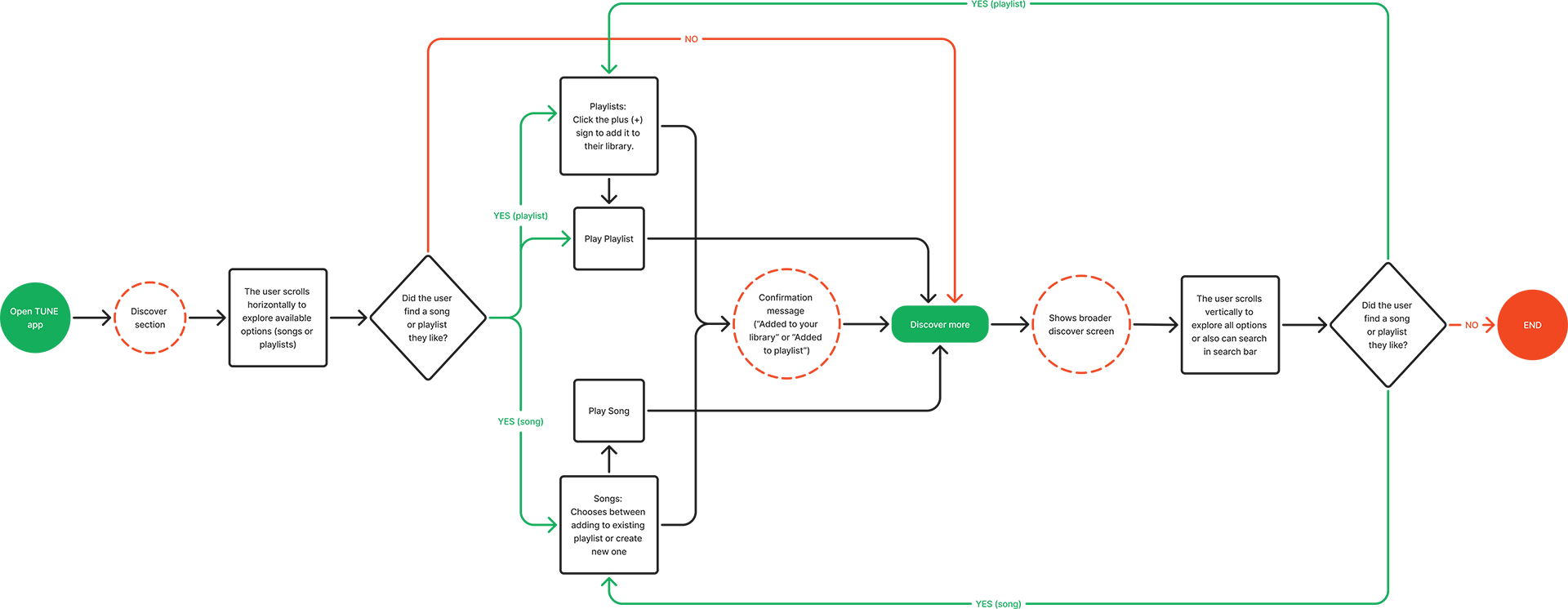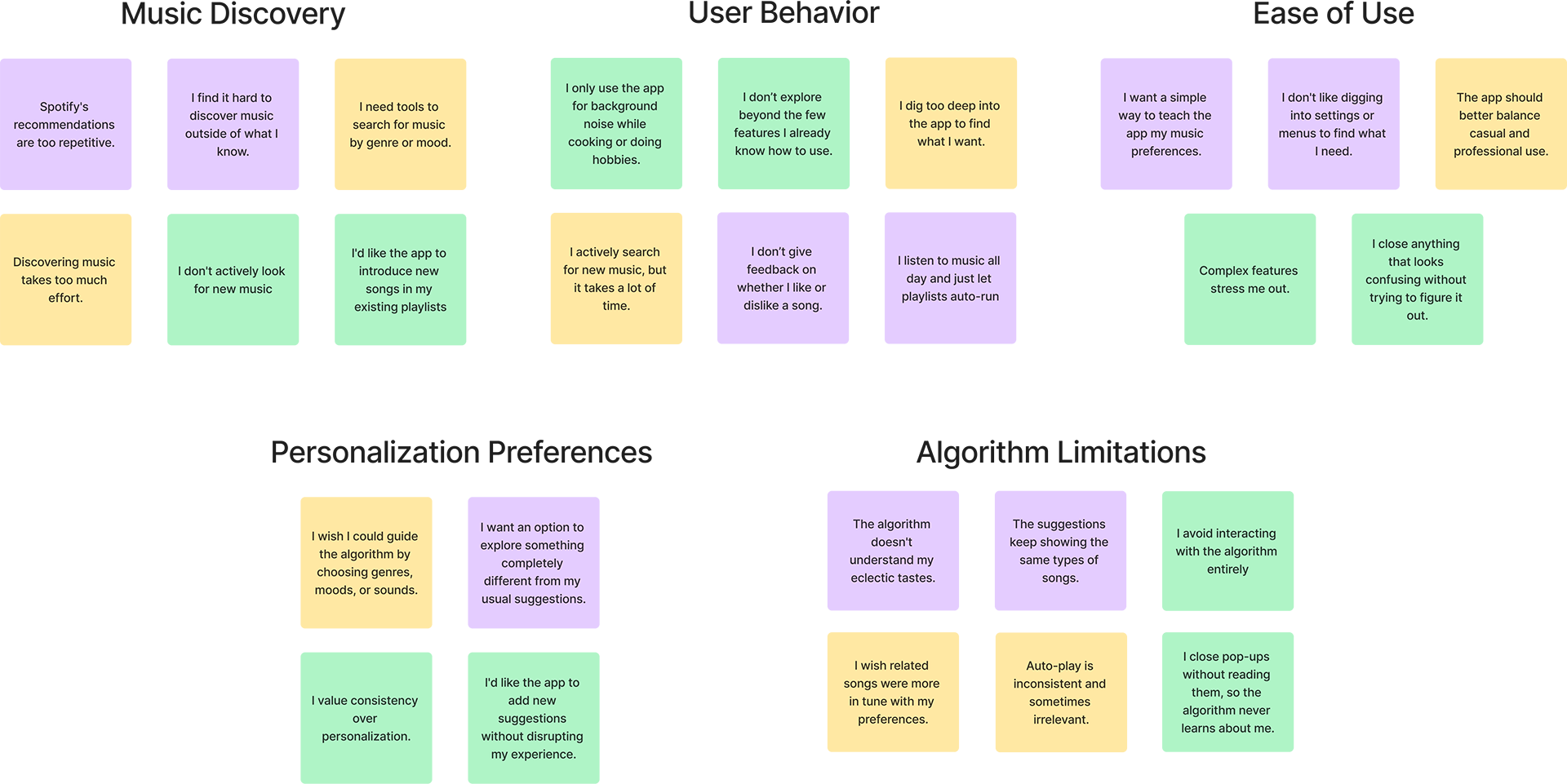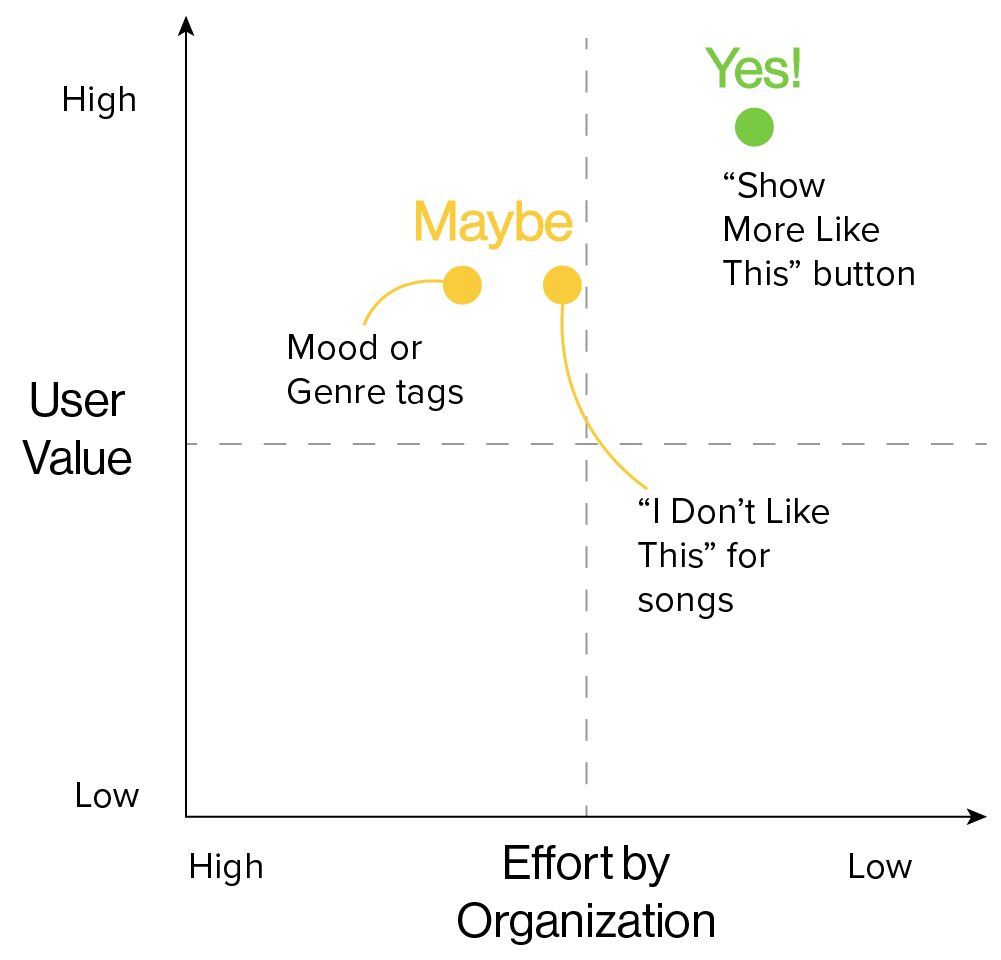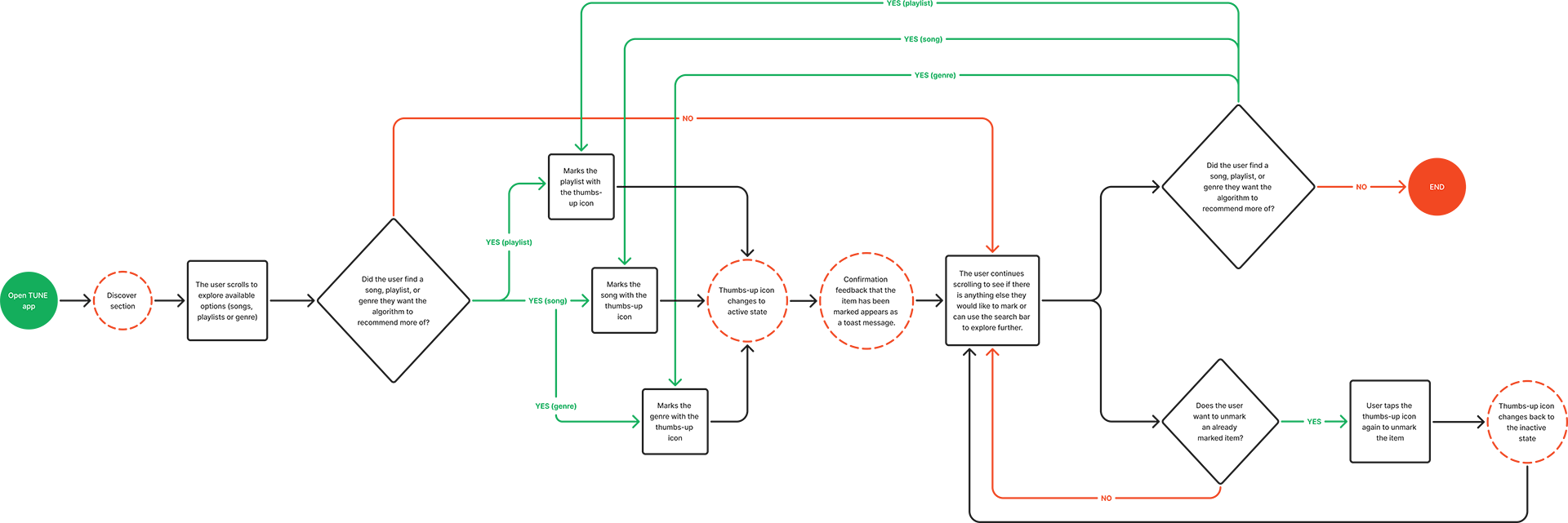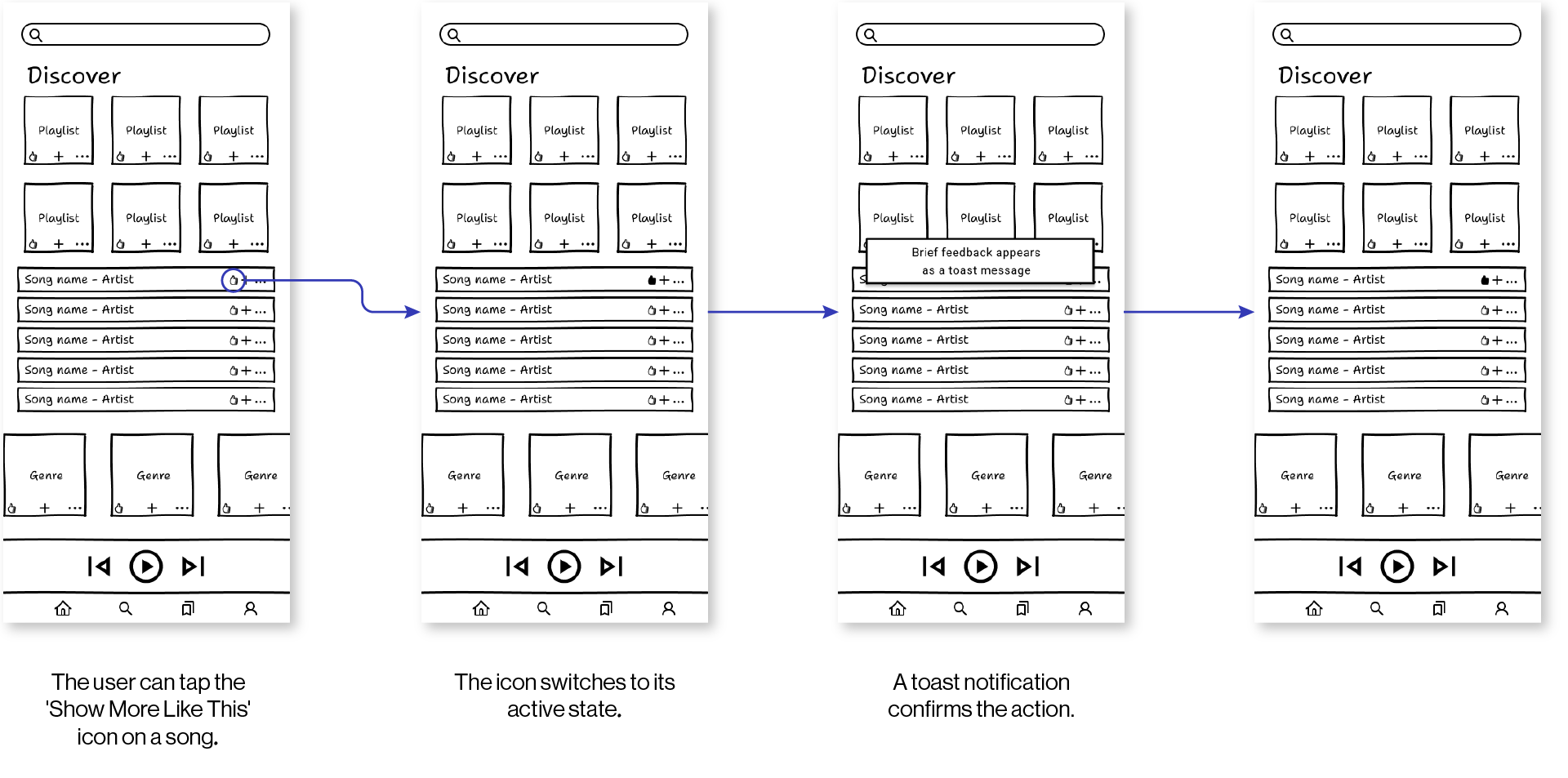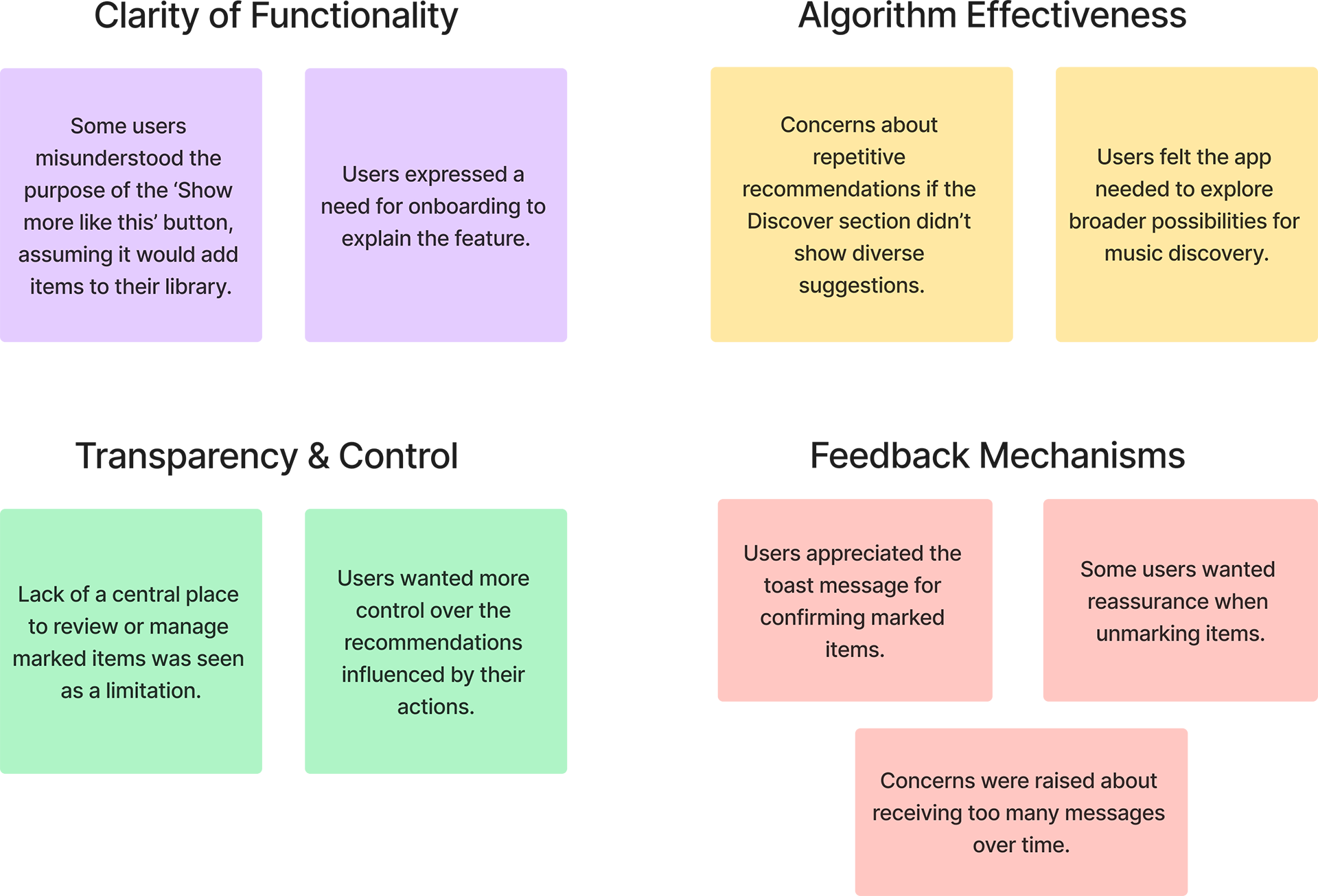Tune UX Case Study
UX Design
Figma, FigJam, Illustrator
2024
A user-centered redesign for the Tune music app, focusing on improving music discovery and personalization. The project involved conducting user research, synthesizing insights, and developing the "Fine-Tuning" feature, a button and hub that empower users to refine algorithmic recommendations interactively. The design balances simplicity for casual users with advanced functionality, showcasing my ability to translate research into actionable UX solutions.
Problem Statement
Users found it difficult to discover new music, as recommendations often felt repetitive and disconnected from their evolving tastes. The app offered little control over how the algorithm adapted.
Below is the original user flow of the Discover section, prior to the redesign. Users navigate to the Discover section, where they browse recommended songs and playlists based on their listening habits. From there, users can add songs or playlists to their library for future listening.
Heuristic Review
Evaluated the app against usability heuristics to identify problem areas, with a focus on navigation, music discovery, and user control over recommendations.
| Finding | Heuristic Violated | Description |
|---|---|---|
| Insufficient music discovery | Match Between System and the Real World | Recommendations feel static, failing to match users’ evolving tastes. |
| Overwhelming choices for casual listeners | Aesthetic and Minimalist Design | Too many features or unclear presentation overwhelm casual users. |
| Navigation issues | Consistency and Standards | Inconsistent navigation confuses and frustrates users. |
| Complexity in playlist creation | User Control and Freedom | Playlist creation feels overly complicated, leading to user frustration. |
After analyzing the information, it seemed likely that users struggled to discover new music due to repetitive algorithmic suggestions and limited control to refine them.
Research & Insights
Conducted user interviews and usability testing to understand how users discover and interact with new music. As the following affinity map shows, key insights revealed a strong need for more personalized recommendations, as well as clearer feedback from the system about how actions influence the algorithm. Users also expressed confusion around how to refine their listening experience within the app.
Top Insights
Guiding the Algorithm
More Variety in Recommendations
Dynamic Personalization
General Recommendations
Provide a Simple Feedback Mechanism
Create a Personalized Discovery Process
Enhance Transparency in Personalization
Ideation
Generated ideas using a Crazy 8 exercise focused on the main recommendation: providing a simple feedback mechanism. Evaluated them using User-Centered Design principles, and mapped the top three using an Effort vs. Impact matrix.
The 'Show more like this' feature was chosen for its simplicity, feasibility, and alignment with user needs. It lets users mark songs, playlists, or artists they enjoy to refine recommendations dynamically. Marked items don’t go into the library but personalize future suggestions, offering a seamless way to guide the algorithm.
Updated user flow
This feature integrates seamlessly into the current user flow, adding functionality for users to refine recommendations dynamically by marking songs, playlists, or genres they enjoy.
Low-Fidelity Prototype
Created a low-fidelity prototype to test usability, focusing on user interaction with the 'Show More Like This' button, toast feedback, and flow continuation.
Usability Testing
Tested the low-fidelity prototype with three participants, an active listener, a professional DJ, and a casual listener. The test identified key areas for improvement, including clearer onboarding, more refined feedback, and broader suggestions in the Discover section, as shown in the following table and affinity map.
| Screen | What Worked | What Needed Improvement |
|---|---|---|
| Discover Section (Initial State) | Majority of users understood the ‘Show more like this’ button. | Some users thought it would add content to their library. Concerns about the risk of repetitive recommendations. |
| ‘Show More Like This’ Activated | Users appreciated the visual state change when toggling the button. | No feedback on improvements |
| Toast Feedback Message | Feedback message confirmed the action effectively. Subtle and non-intrusive messaging was valued. | Concerns about seeing too many messages over time. |
| Returning to Activity | Users liked the uninterrupted flow after marking items. Majority felt confident toggling the button off later. | Some users wanted additional reassurance when unmarking items. |
Key Changes Made Based on Feedback
Updated name from ‘Show More Like This’ to Fine-Tuning
Added nnboarding
Created Fine-Tuning Hub
Refined feedback messages
Broadened Discover algorithm
Mid-Fidelity Prototype
The prototype showcases key enhancements addressing user needs, including a Fine-Tuning onboarding message, a Discover section that evolves with user input, subtle feedback toasts confirming actions, and a dedicated Hub offering control over marked items. These improvements result in a more personalized, responsive music discovery experience.
Solution Overview
The Fine-Tuning feature directly addresses the initial problem identified: users struggling with repetitive recommendations and a lack of control over their music discovery experience.
Key Improvements
Personalization: The Fine-Tuning Hub consolidates marked items, allowing users to refine their music preferences interactively.
Transparency: The dedicated hub gives users visibility into their preferences, fostering trust in the algorithm.
Control: The Fine-Tuning button empowers users to directly influence the recommendations, creating a tailored music discovery process.
Outcomes & Reflections
This project showed how research, iteration, and feedback can shape meaningful features –like Fine-Tuning– that respond to real user frustrations. While this is a final version for the course, in a real product cycle it would still be evolving. The experience highlighted the importance of balancing simplicity and control to create intuitive, flexible user experiences.


